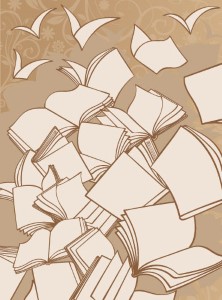Dance Of Death
О книге
Аннотация
Agent Pendergast has become one of crime fiction's most endearing characters. His greatest enemy is one who has stalked him all of his life, his cunning and diabolical brother Diogenes. And Diogenes has thrown down the gauntlet. Now, several of the people closest to Pendergast are viciously murdered, and Pendergast is framed for the deeds. On the run from federal authorities, with only the help of his old friend NYPD Lieutenant Vincent D'Agosta, Pendergast must stop his brother. But how can he stop a man that is his intellectual equal-one who has had 20 years to plan the world's most horrendous crime?
- Начало книги
- ***
- ACKNOWLEDGMENTS
- ONE
- TWO
- THREE
- FOUR
- FIVE
- SIX
- SEVEN
- EIGHT
- NINE
- TEN
- ELEVEN
- TWELVE
- THIRTEEN
- FOURTEEN
- FIFTEEN
- SIXTEEN
- SEVENTEEN
- EIGHTEEN
- NINETEEN
- TWENTY
- TWENTY-ONE
- TWENTY-TWO
- TWENTY-THREE
- TWENTY-FOUR
- TWENTY-FIVE
- TWENTY-SIX
- TWENTY-SEVEN
- TWENTY-EIGHT
- TWENTY-NINE
- THIRTY
- THIRTY-ONE
- THIRTY-TWO
- THIRTY-THREE
- THIRTY-FOUR
- THIRTY-FIVE
- THIRTY-SIX
- THIRTY-SEVEN
- THIRTY-EIGHT
- THIRTY-NINE
- FORTY
- FORTY-ONE
- FORTY-TWO
- FORTY-THREE
- FORTY-FOUR
- FORTY-FIVE
- FORTY-SIX
- FORTY-SEVEN
- BA-0002359148
- FORTY-EIGHT
- FORTY-NINE
- FIFTY
- FIFTY-ONE
- FIFTY-TWO
- FIFTY-THREE
- FIFTY-FOUR
- FIFTY-FIVE
- FIFTY-SIX
- FIFTY-SEVEN
- FIFTY-EIGHT
- FIFTY-NINE
- SIXTY
- SIXTY-ONE
- SIXTY-TWO
- SIXTY-THREE
- SIXTY-FOUR
- SIXTY-FIVE
- SIXTY-SIX
- SIXTY-SEVEN
- SIXTY-EIGHT
- SIXTY-NINE
- SEVENTY
- SEVENTY-ONE
- SEVENTY-TWO
Скачать или читать онлайн книгу Dance Of Death
На этой странице свободной электронной библиотеки fb2.top любой посетитель может читать онлайн бесплатно полную версию книги «Dance Of Death» или скачать fb2 файл книги на свой смартфон или компьютер и читать её с помощью любой современной книжной читалки. Книга написана авторами Линкольн Чайлд, Дуглас Престон, является частью серии Pendergast, относится к жанру Триллер, добавлена в библиотеку 15.01.2009 и доступна полностью, абсолютно бесплатно и без регистрации.
С произведением «Dance Of Death» , занимающим объем 409 печатных страниц, вы наверняка проведете не один увлекательный вечер. В нашей онлайн читалке предусмотрен ночной режим чтения, который отлично подойдет для тёмного времени суток и чтения перед сном. Помимо этого, конечно же, можно читать «Dance Of Death» полностью в классическом режиме или же скачать всю книгу целиком на свой смартфон в удобном формате fb2. Желаем увлекательного чтения!
С этой книгой читают:
- Старые кости - Линкольн Чайлд
- Стихи для мертвецов - Линкольн Чайлд
- Город вечной ночи - Линкольн Чайлд
- Обсидиановая комната - Линкольн Чайлд
- Тайны и загадки мира. Книги 1-8 - Линкольн Чайлд
- Напрасная надежда - Юлия Бушмарина
- Аэрофобия 7А - Себастьян Фитцек
- Двадцать третий пассажир - Себастьян Фитцек
- Я – убийца - Себастьян Фитцек
- Тот, кто виновен - Себастьян Фитцек


 Книжный Вестник
Книжный Вестник Поиск книг
Поиск книг Любовные романы
Любовные романы Саморазвитие
Саморазвитие Детективы
Детективы Фантастика
Фантастика Классика
Классика ВКОНТАКТЕ
ВКОНТАКТЕ